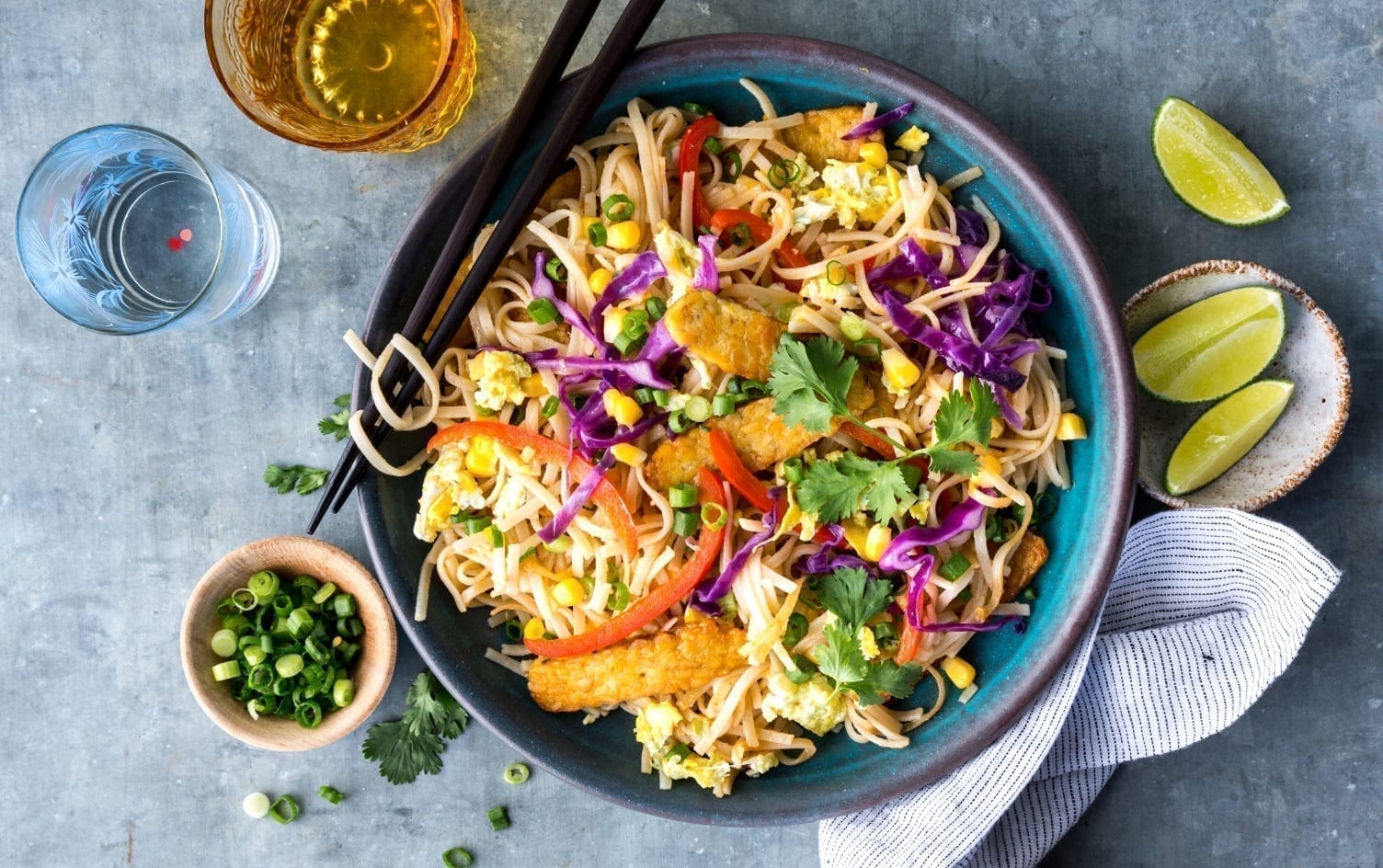The benefits of going vegan are many: “Research shows vegans have a lower risk of chronic diseases, such as certain types of cancer, heart disease, hypertension and Type 2 diabetes,” says Sharon Palmer, RD, author of “The Plant-Powered Diet.” For those already living with a chronic condition, such as diabetes or heart disease, a more plant-based approach to food could even help manage symptoms, per the Academy of Nutrition and Dietetics.
That’s because a diet rich in vegetables, fruits, whole grains, nuts and seeds is packed with fiber, healthy fats, micronutrients and phytochemicals, explains Palmer. This helps fill you up while keeping your caloric intake lower.
However, these perks come with what would be a drastic lifestyle change for many, since vegans reject all animal products (Read: no meat, poultry, fish, eggs or dairy).
The good news is you don’t need to adopt the full vegan lifestyle to improve your health. Here, five healthy habits you can borrow from your vegan friends and fit into any eating pattern:
FILL UP ON HEALTHIER FATS
In a world full of fat-free labels, it’s easy to mistakenly think fat isn’t your friend. But the unsaturated fats found in vegetable oils, nuts and seeds can help quiet your hunger bells and improve your heart health, says Anja Grommons, RD, who specializes in vegan-centric diets. “Fat is one of the more satiating macronutrients, meaning it keeps us feeling full and satisfied.”
In fact, replacing sources of saturated fat, such as butter, with plant-based oils like olive and sunflower could reduce your risk of cardiovascular disease by nearly a third — which is why the American Heart Association (AHA) recommends making the switch.
Try topping oatmeal with chopped walnuts, drizzling herbed olive oil over your salad or opting for mashed avocado on your sandwiches, suggests Grommons.
MAKE VEGETABLE-HEAVY DISHES
Well-planned vegan diets are packed with vegetables rich in fiber (key for digestion and heart health) and phytochemicals (which are both anti-inflammatory and have antioxidant-like properties). A few veggies to start with: “Mushrooms are a really important vegetable to include in a vegan diet, because they impart that rare umami (or savory) flavor to foods,” says Palmer. “They can also provide a faux meaty flavor and texture to dishes such as stir-fries, patties, pasta and tacos.” She also recommends green leafy vegetables, as they are packed with key nutrients including minerals like calcium and iron, and cruciferous vegetables (broccoli, cabbage and kale) for calcium.
EAT MORE PULSES
Pulses — better known as beans, lentils, chickpeas and split peas — are the “fiber king of the plant world,” says Palmer, with 1/5 of the fiber you need per day in just a 1/2-cup serving. Fiber gives you that satisfied full-belly feeling and can help lower your blood pressure. What’s more, a pulse-filled diet has been linked to weight loss and a lower risk of Type 2 diabetes.
Try swapping meat for pulses (Think: veggie chili and stews) at least a few times a week, says Palmer. Sprinkle them into your salads, add them to grain bowls and puree them into hummus.
TRY ALTERNATIVE MEAT PRODUCTS
Red meat and processed meats have been linked to an increased risk of developing certain cancers, according to the World Cancer Research Fund. To limit your intake, try opting for the occasional plant-based protein like tofu, tempeh, seitan and bean burgers, says Grommons. Reducing how much meat you consume has been linked to healthier bodyweight, improved blood pressure and even a reduced risk of Type 2 diabetes, shows a recent review.
“A good rule of thumb when choosing plant-based meat analogues is to choose items with at least 10 grams of protein per serving,” says Grommons, which is why you should read the labels carefully when choosing your next veggie burger.
EMBRACE WHOLE GRAINS
Whole grains are a staple of vegan diets and for good reason — they’ve been linked to a lower risk of certain cancers, obesity, heart disease and Type 2 diabetes. These are the grains in their natural, whole state (the entire seed of a plant encased in an inedible husk). Since they haven’t been processed, they’re higher in fiber and protein.
Munch on whole-grain toast for an energizing, fiber-rich start to your day, suggests Grommons. Stock up on nutrient-rich picks like quinoa, farro and brown rice. You can use these grains as a base for bowls, tossed into soups and salads or to make healthy meal prep lunches.




